The Darling
After a short run into Bourke this morning we spent a few hours reacqainting ourselves with this town and its pivoltal role in the wool and shipping industry of the 1880s. Shipping!, thats right even though the town is nearly 1000km from the coast it was a major shipping port for the trade along the Darling and Murray River systems. In the town there is still a revived remnant of the dock used in this trade. In fact there are a number of towns we will mention and visit over the next few days that were founded mainly because of that trade.
We spent the day following the Darling Trail a minor road that follows the SW direction of the Darling on its Northern Side with the intention of getting to the town of Louth (more on this town later). Along the way we took a detour into Toorale National Park and visited a remote camping ground on the banks of the Darling. The area was noticeable for the abundance of Kangaroo and Emu.
Late in the day we pulled into the small town of Louth, another town founded in the 1880s to support the Darling River Trade. The town was named after an Irish County of the same name. Just south of Louth is Dunlop Station which in 1888 was the first sheep station in the world to use mechanically powered shears to clip the wool. At the time the station was owned by Sir Samuel McCaughey. The shearing system was invented by Fredrick York Wolseley.
In Louth we camped at the local pub called Shindy's Inn and Campground.
Shindy's had a good exhibition of pioneer memorabilia including a bicycle used by itinerant shearers, who during shearing season travelled from station to station.
For much of today we travelled through flood plains (at least that what our map told us) with a bit of evidence of recent rain. However every view of the Darling River showed us a river that is not very big, maybe 150 meters wide and full of fallen trees and other obstacles. So how was it used for shipping? In Louth we learned that when in flood the Darling can expand over its banks and fill those flood plains to a width of 80Km. So shipping on this river was episodic, only when there was enough water.
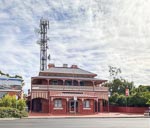
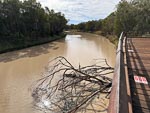
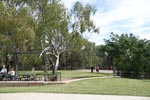

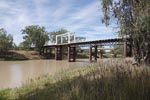
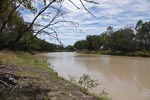
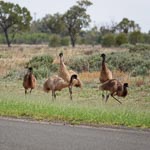
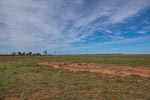
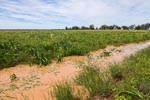
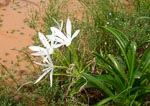
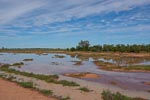
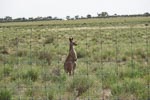
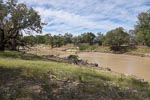
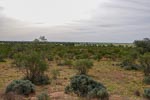
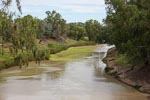
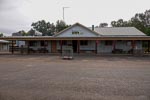

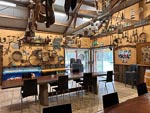
Back to Long Paddocks. For our non-Australian readers the phrase Long Paddock used in yesterdays post refers to the sides of public outback roads. During drought the last remaining grass is often the grass on the side of the road. Culverts on the sides of roads collect water and often have good stands of grass, and usually live stock do not graze beside the road. During a drought once a farmers grazing lands are exhausted they will often drive their live stock out onto the road to eat that last foder.